Life at the White House
Throughout President Obama’s eight years in office, the White House was both a place of business and a home — a home filled with celebrations, dinners, visitors from near and far, and the family dogs.

Letters to President Obama
When President Obama took office, he asked his staff to send him 10 letters from constituents to read every night. These letters—hand-picked from the thousands of emails and handwritten notes that the White House receives every day—represented the stories and concerns of Americans across the country. The President read a new batch of letters every night, and he often visited letter writers in their hometowns and spoke about how these messages have inspired him and his policies.

At Home in the White House
President Obama’s daughters, Malia and Sasha, called the White House Residence their home for eight years during his administration.

Shortly after taking office, President Obama adapted the White House tennis court to allow enough room for a full court game of basketball. The court has played host to a number of distinguished visitors, from college basketball championship teams to Wounded Warrior players.
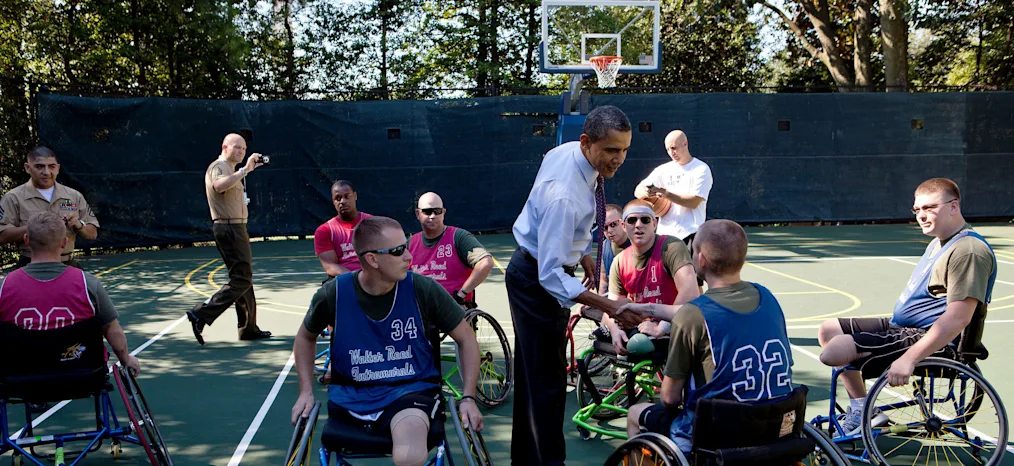
There’s Always Time for Family Dinner'
“When we’re in town here in Washington, in the evenings, 6:30 we want to be at the dinner table with our kids and I want to be helping with the homework.” —President Obama
When they spent time in the dining room, the Obama family surrounded themselves with artwork and decor that reflected their modern sense of style. By selecting Alma Thomas’ 1966 painting “Resurrection,” the Obamas ensured that she became the first African-American woman artist to be a part of the White House permanent collection.
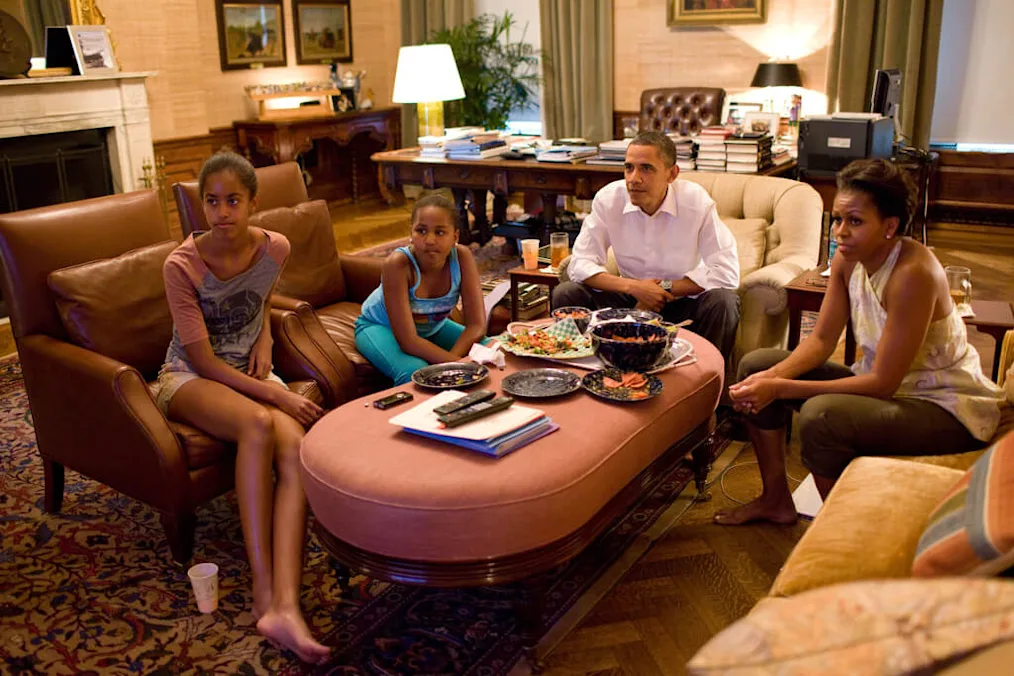
The Kitchen Garden
The Kitchen Garden was planted in the spring of 2009 by Mrs. Michelle Obama with the help of students from a local elementary school. The first kitchen garden on White House grounds since Mrs. Eleanor Roosevelt’s Victory Garden during World War II inspired Mrs. Obama’s Let’s Move! initiative to raise a healthier generation of kids.
White House chefs use produce from the garden for preparing meals for the First Family, as well as for official functions like state dinners. Some produce is donated to Miriam’s Kitchen, a local homeless shelter providing services and homemade meals, a soup kitchen near the White House.

“ I take great pride in knowing that this little garden will live on as a symbol of the hopes and dreams we all hold of growing a healthier nation for our children.”
–Michelle Obama, November 2016
February 9th, 2010
Helped Kids Get Fit with “Let’s Move!”
In 2009, Mrs. Obama planted the White House Kitchen Garden on the South Lawn to initiate a national conversation around the health and wellbeing of the country. In time, that conversation led to Let’s Move!. Through policy, programs, public awareness, and partnerships, Let’s Move! is about putting children on the path to a healthy future during their earliest months and years; giving parents helpful information and fostering environments that support healthy choices; providing healthier foods in our schools; ensuring that every family has access to healthy, affordable food; and helping children become more physically active.
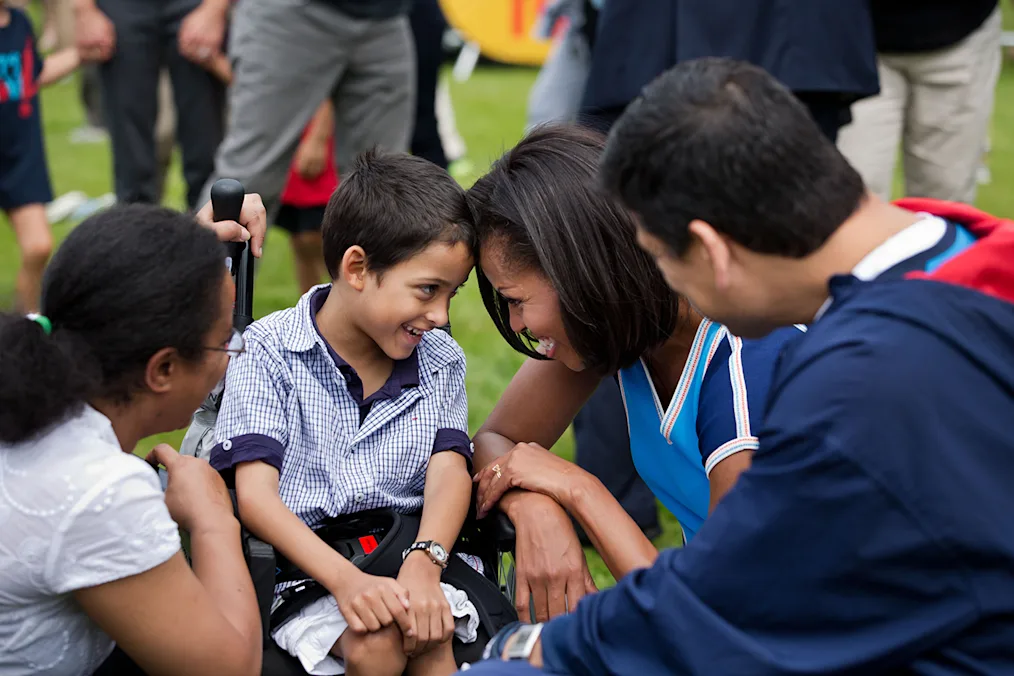

December 13, 2010
The Healthy, Hunger-Free Kids Act
The Healthy, Hunger-Free Kids Act updated school meal nutrition standards for the first time in 15 years and increased school meal funding for the first time in 30 years. The law boosted the quality and nutrition of meals for over 50 million children through the National School Lunch and Breakfast Programs. Its regulations substantially increased offerings of fruits, vegetables, and whole grains, and reduced the amount of saturated fat, trans fat and sodium.

“ We can all agree that in the wealthiest nation on Earth, all children should have the basic nutrition they need to learn and grow and to pursue their dreams, because in the end, nothing is more important than the health and well-being of our children. Nothing. And our hopes for their future should drive every single decision that we make.”
–Michelle Obama, December 13, 2010
White House Champions of Change: One Voice Can Change the World
President Obama challenged us all to help win the future by out-educating, out-innovating, and out-building our competitors in the 21st century. Over the course of his presidency he encouraged citizens to nominate people doing extraordinary things to make a difference in their communities to become Champions of Change.

Improved Veterans’ Service
Mrs. Obama and Dr. Biden launched Joining Forces in 2011 and have seen incredible impacts since that time.
Employment: Through the Military Spouse Employment Partnership, more than 82,000 military spouses have been hired by nearly 300 private- and public-sector partners since the program launched, and more than 850,000 veterans and military spouses have been hired through Joining Forces-allied companies. 50 states have enacted legislation removing credentialing impediments for separating service members and 49 states have enacted legislation assisting in license portability for military spouses.
Education: More than 100 colleges and universities have signed on to “Educate the Educators”, the Joining Forces commitment that will help prepare educators to lead classrooms and develop school cultures that are more responsive to the social, emotional, and academic needs of children in military families. All 50 states have signed on to the Military Child Education Compact to support military students and families.
Wellness: Mrs. Obama launched the Campaign to Change Direction, a mental health public awareness campaign, garnering commitments to teach the “5 Signs” to more than 145 million people. Through a network of medical and mental health professional organizations, this campaign has created opportunities to prepare the nation’s current and future healthcare work force to meet the unique health needs of service members, veterans, and their families.

Travels with the First Lady and Dr. Biden - Joining Forces Launch

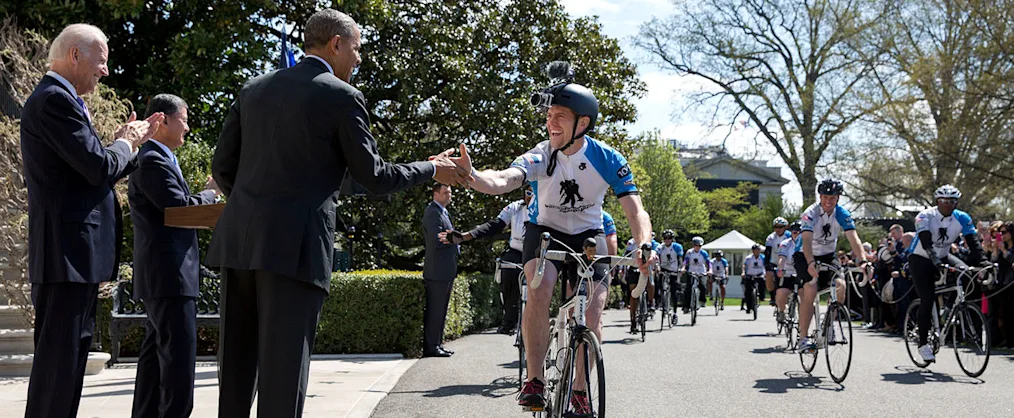

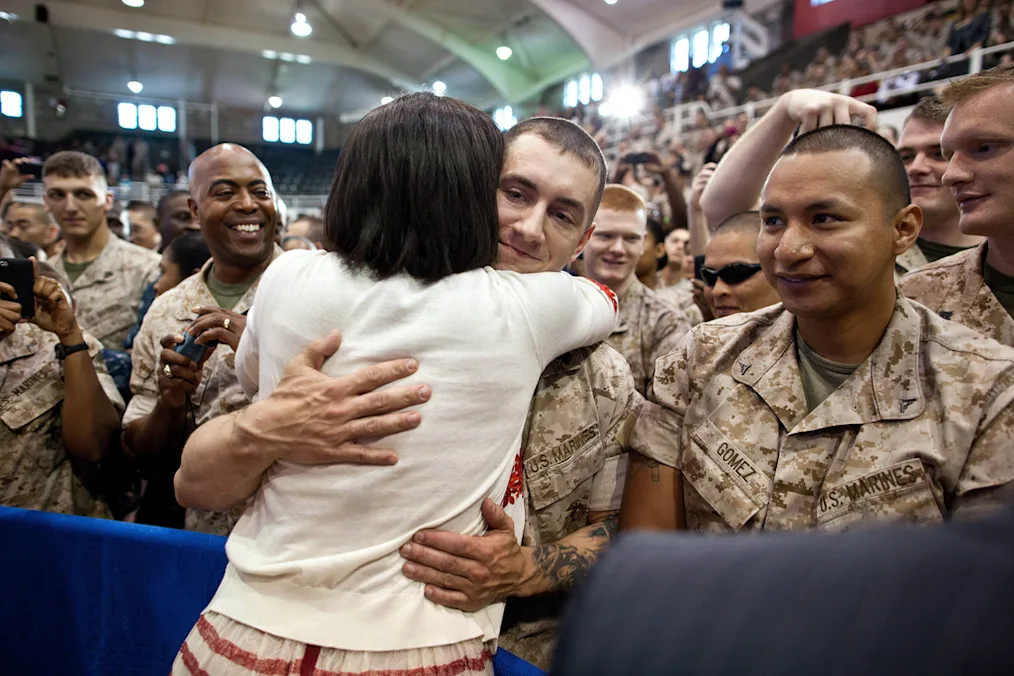
The White House Student Film Festival
Nearly 50 years ago, the American Film Institute (AFI) was born in the White House Rose Garden. Standing just outside the Oval Office, President Lyndon Johnson spoke to the need to bring together “leading artists of the film industry, outstanding educators, and young men and women who wish to pursue the 20th century art form as their life’s work.”
Since that day, new tools and platforms have allowed remarkable voices of a new generation to speak with this art form, and the AFI partnered with the White House in encouraging the young people of America to tell their inspiring tales.
Watch: LEGO: “Education For Her” (a 2015 Finalist) (Opens in a new tab)
Watch: A World Filled With Love (a 2015 Finalist) (Opens in a new tab)

“ In this country, if we give all of our kids the best opportunities and technology and resources, there’s no telling what they’ll create -- now and the years ahead.”
–President Obama, March 2015
Bo and Sunny: First Dogs
Bo, a male Portuguese Water Dog, joined the Obama family at the White House in April 2009, and Sunny, a female Portuguese Water Dog, came along in August 2013.

Celebrations at the Obama White House
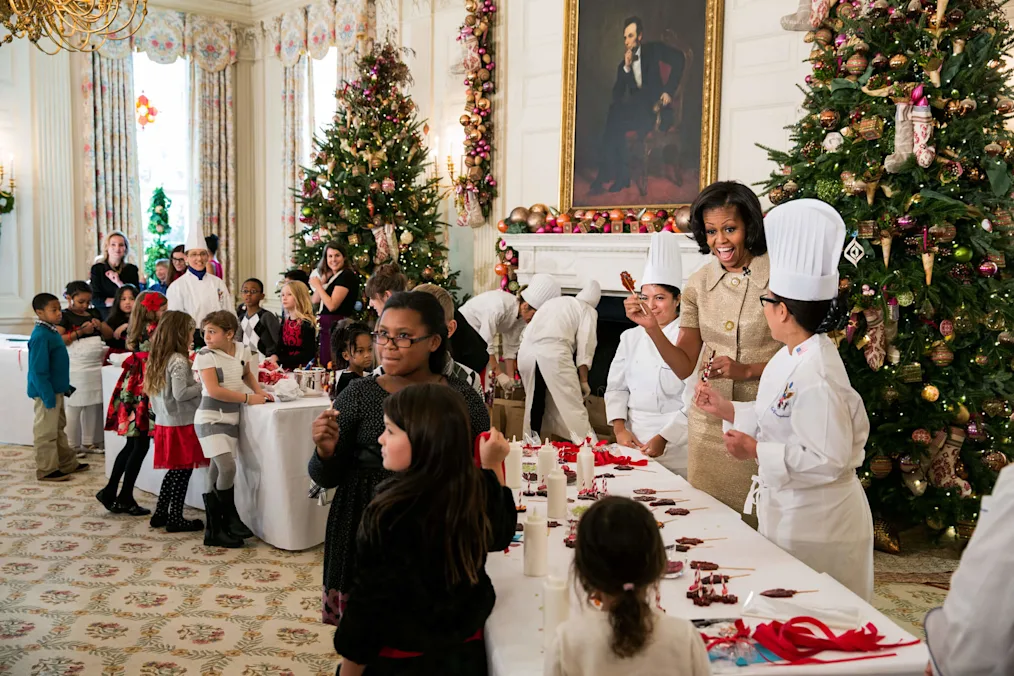
1/21
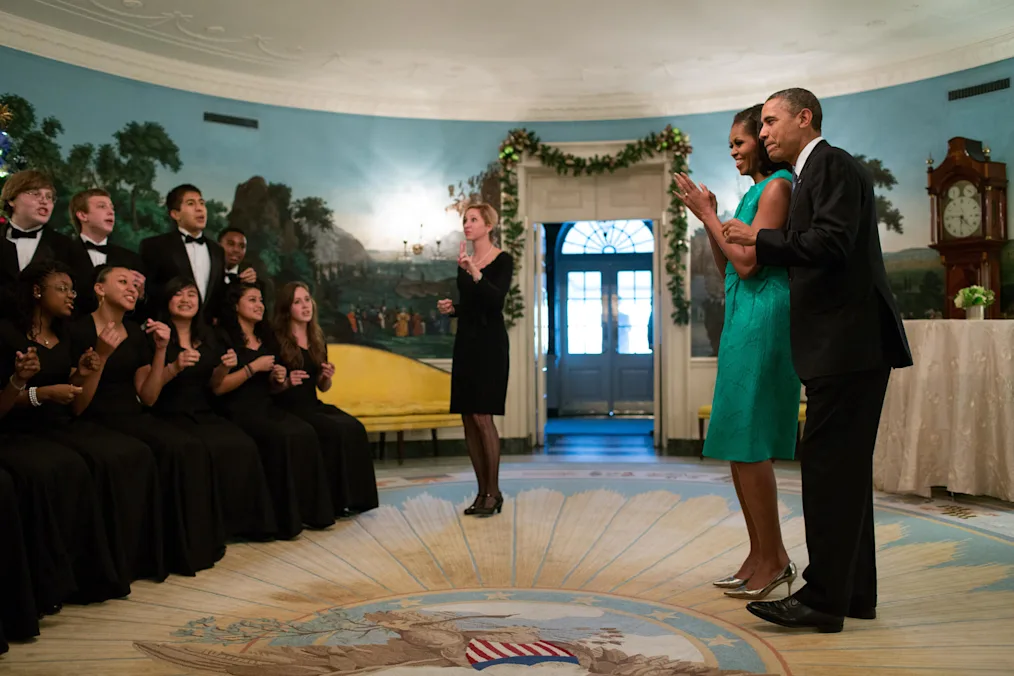
2/21

3/21
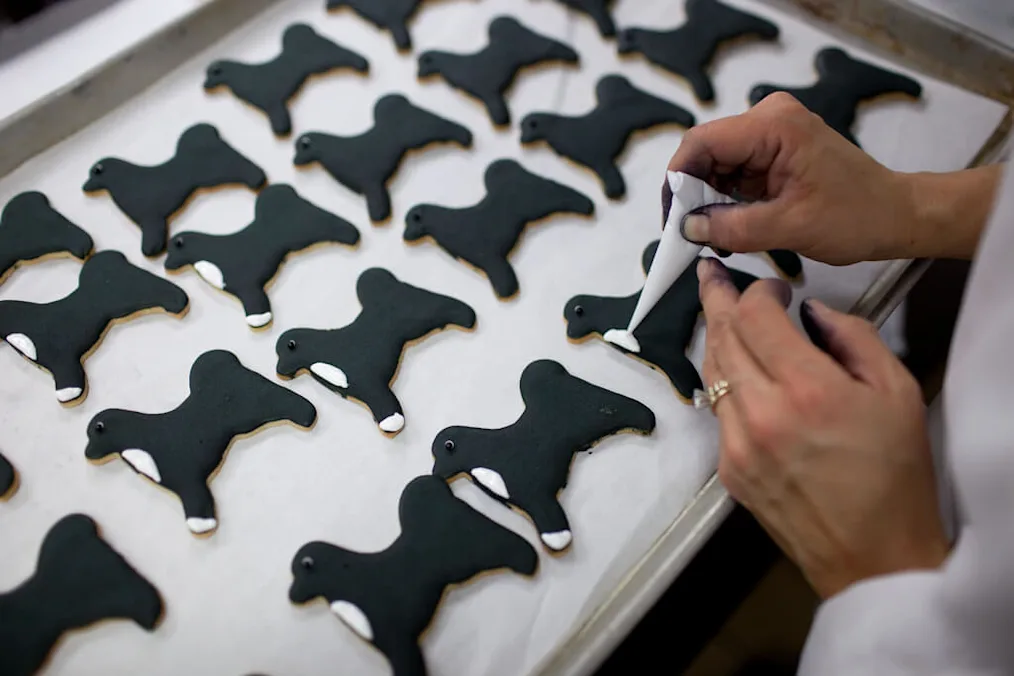
4/21
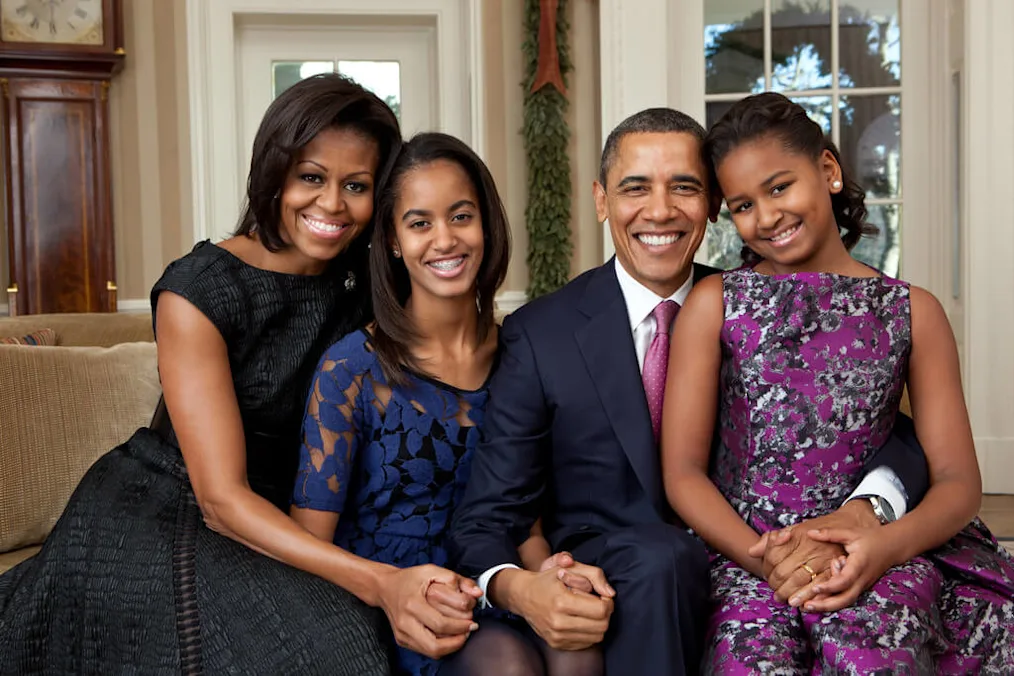
5/21
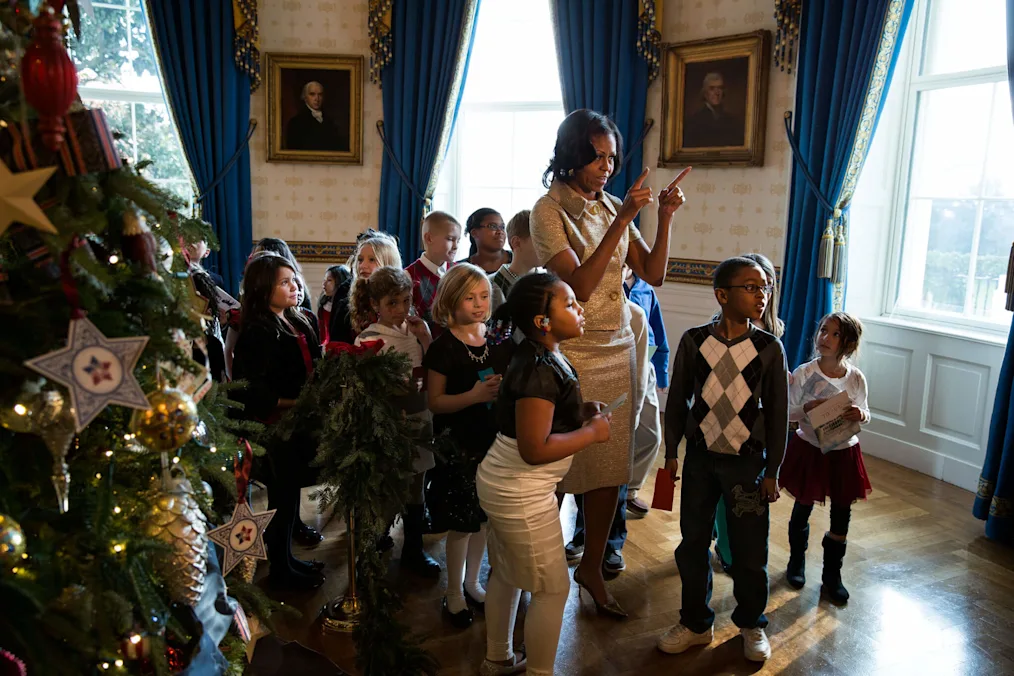
6/21
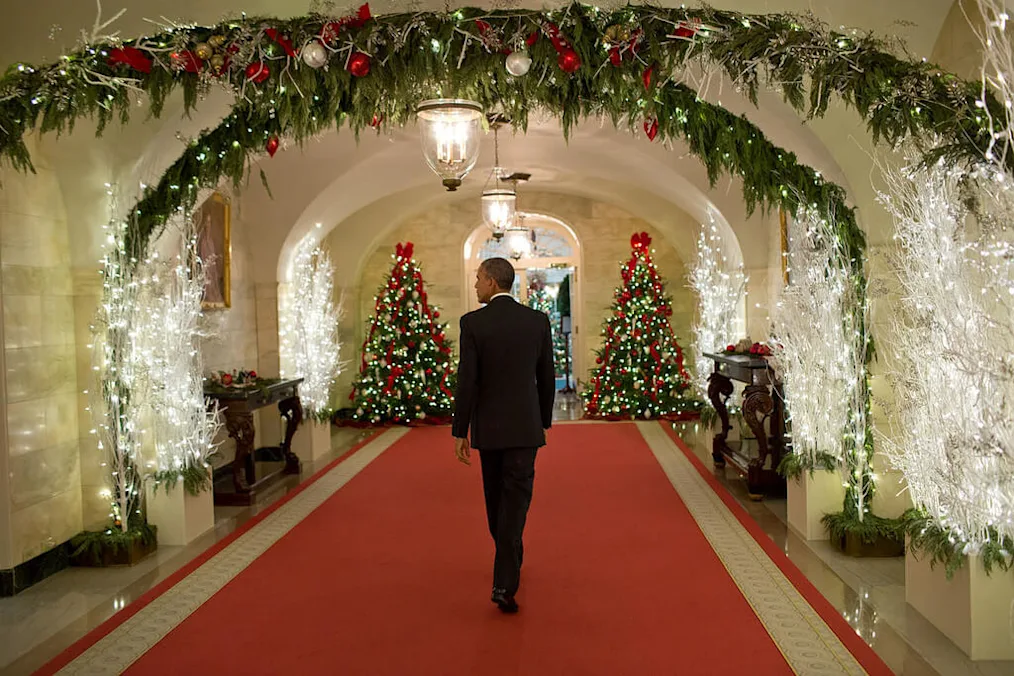
7/21
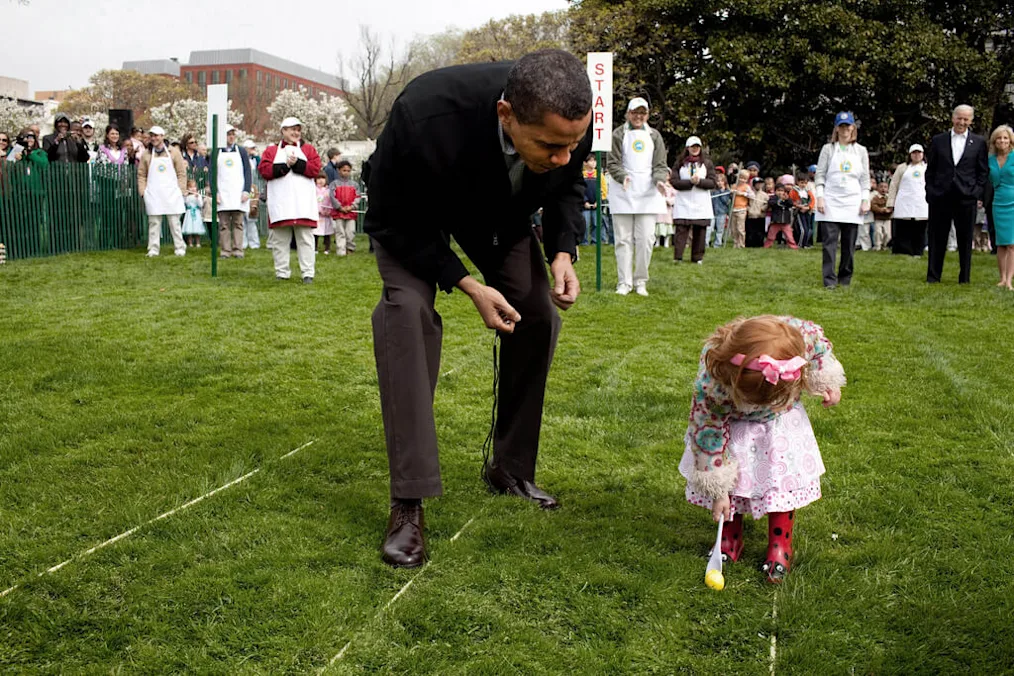
8/21
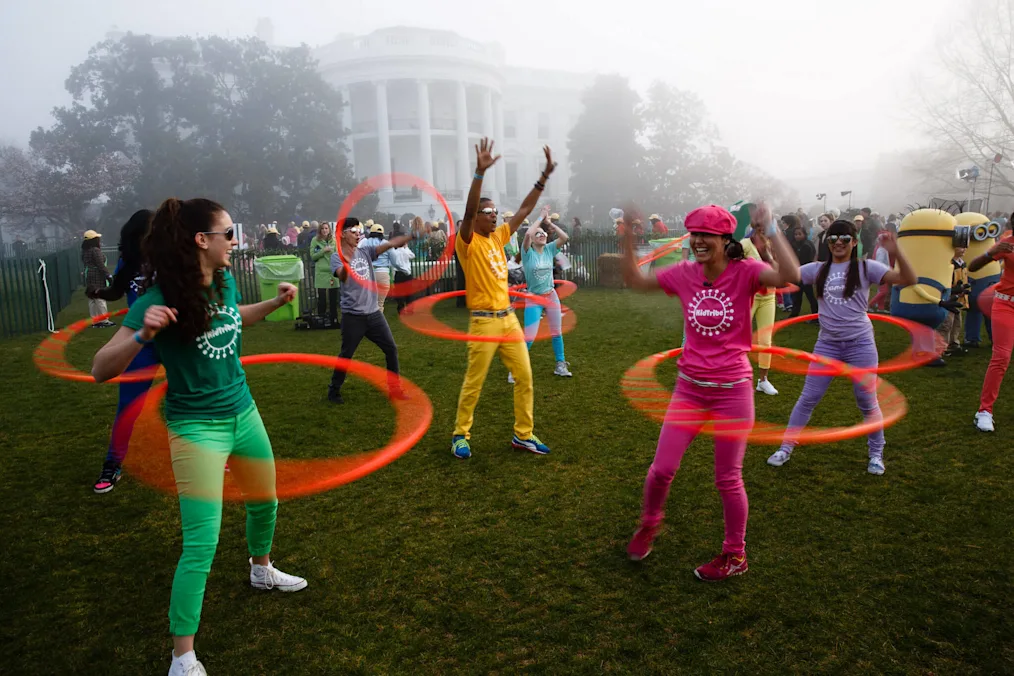
9/21
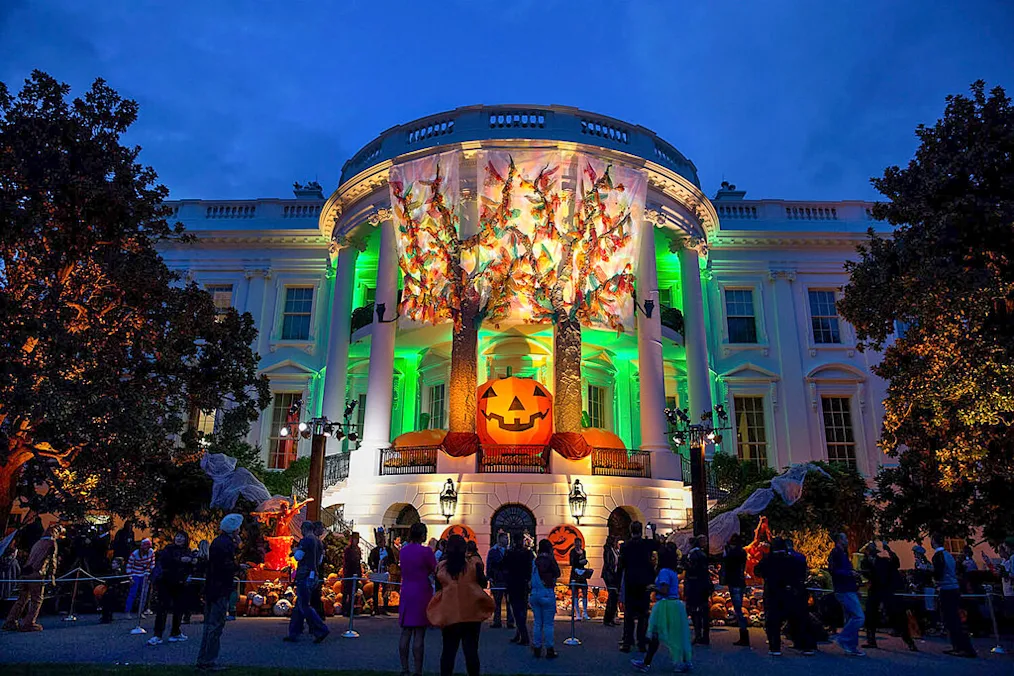
10/21
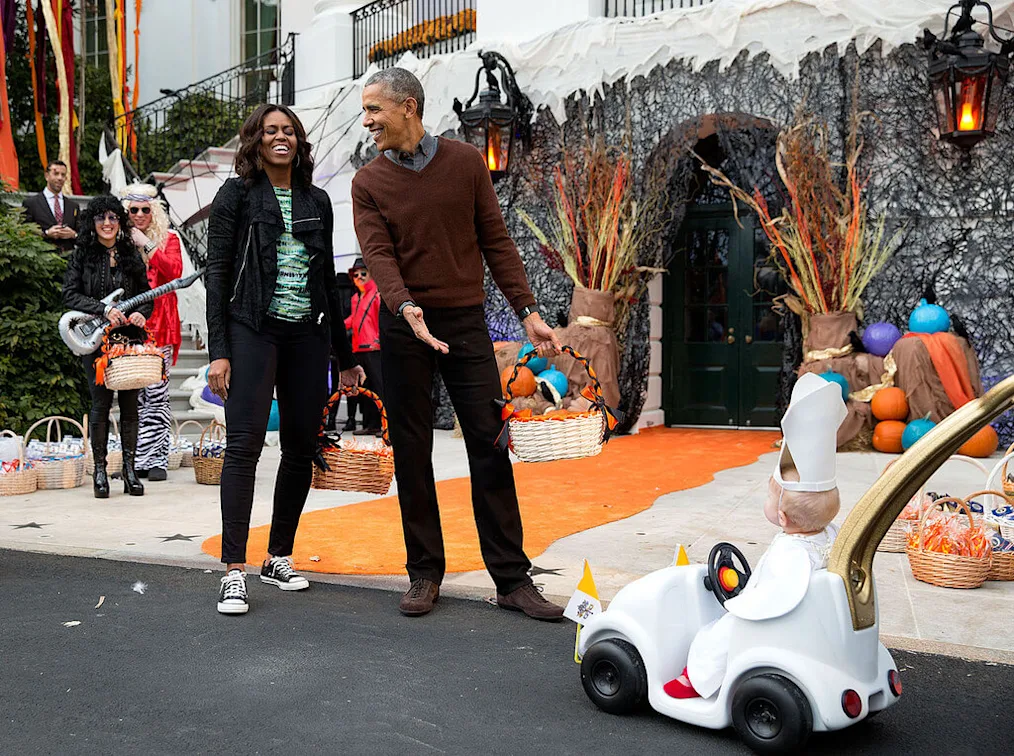
11/21

12/21

13/21
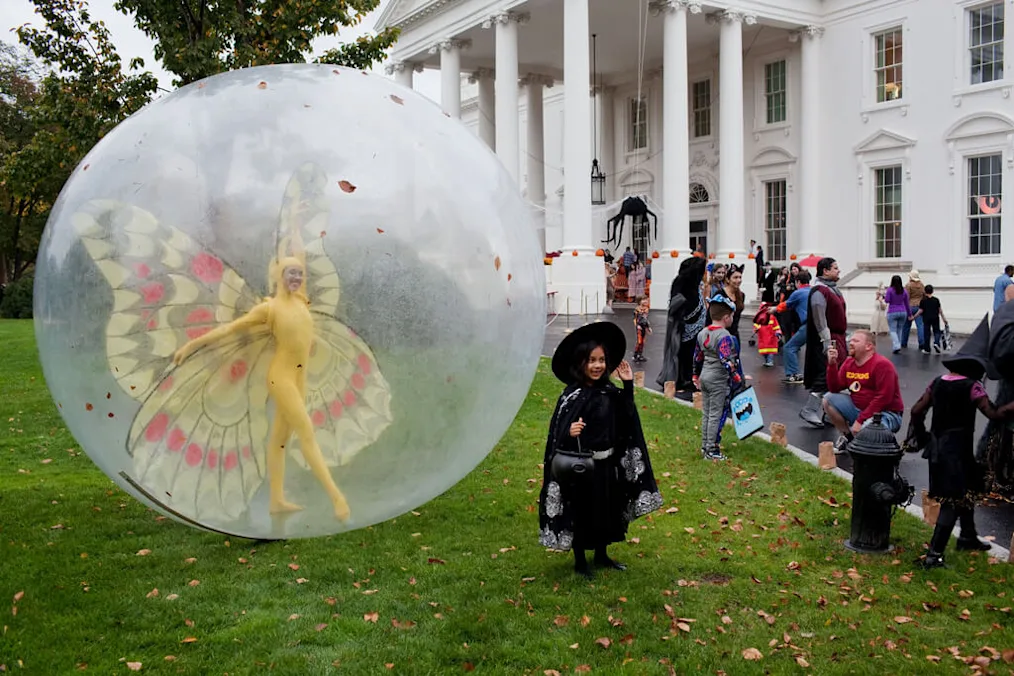
14/21
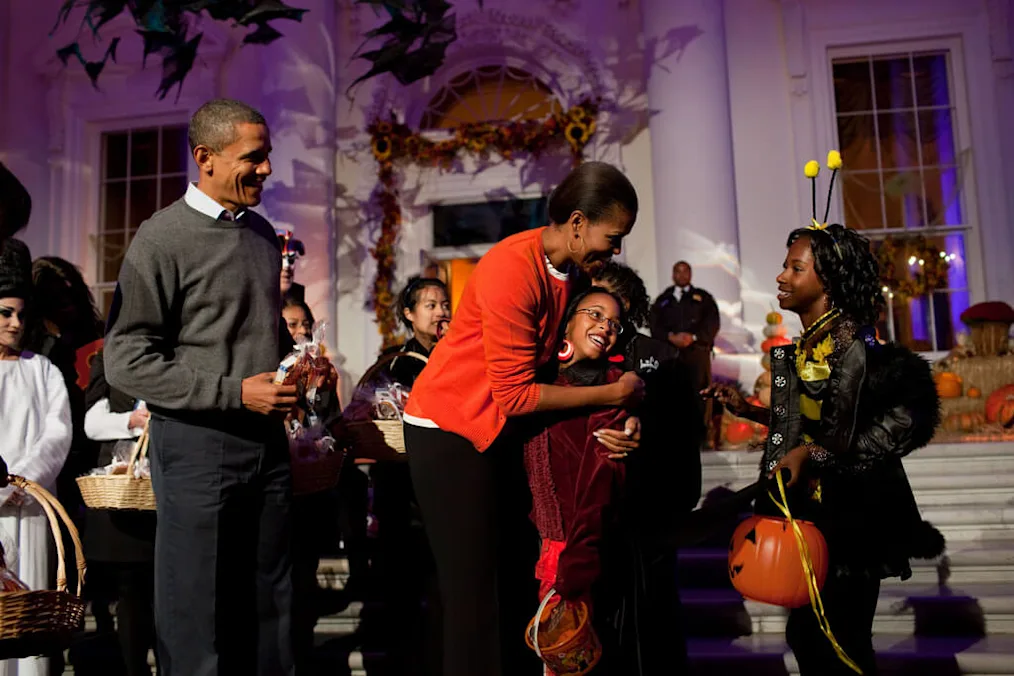
15/21

16/21
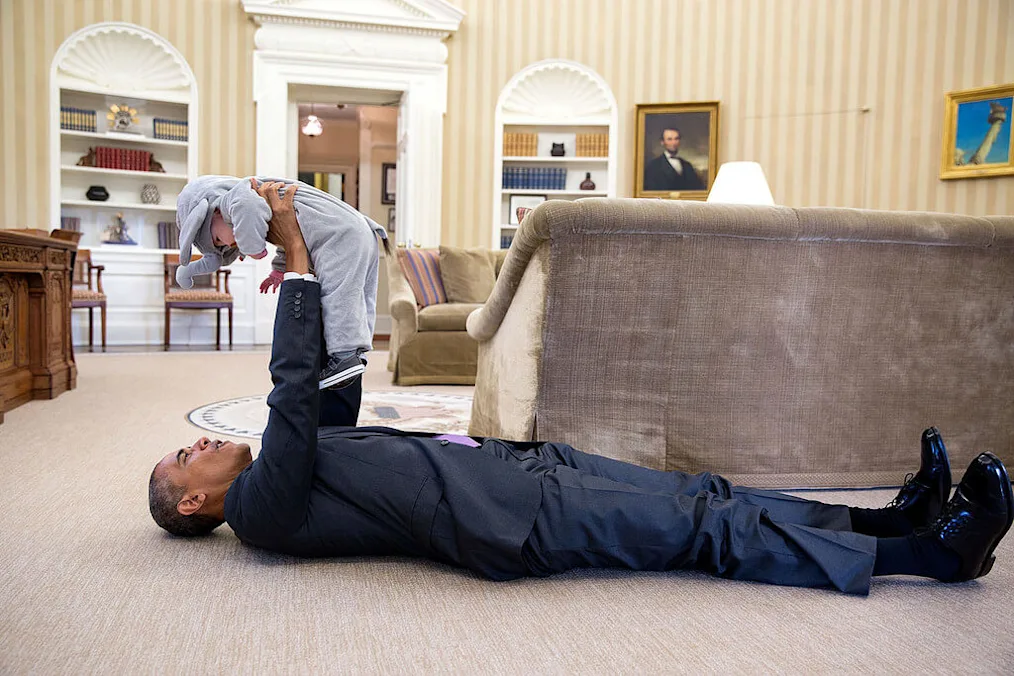
17/21

18/21

19/21
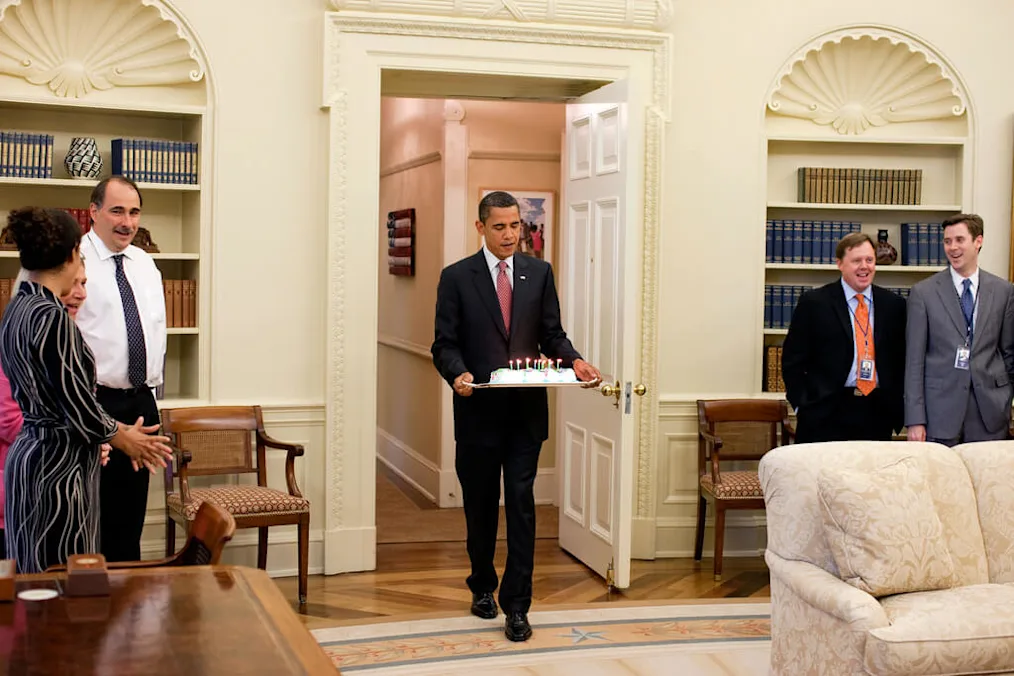
20/21
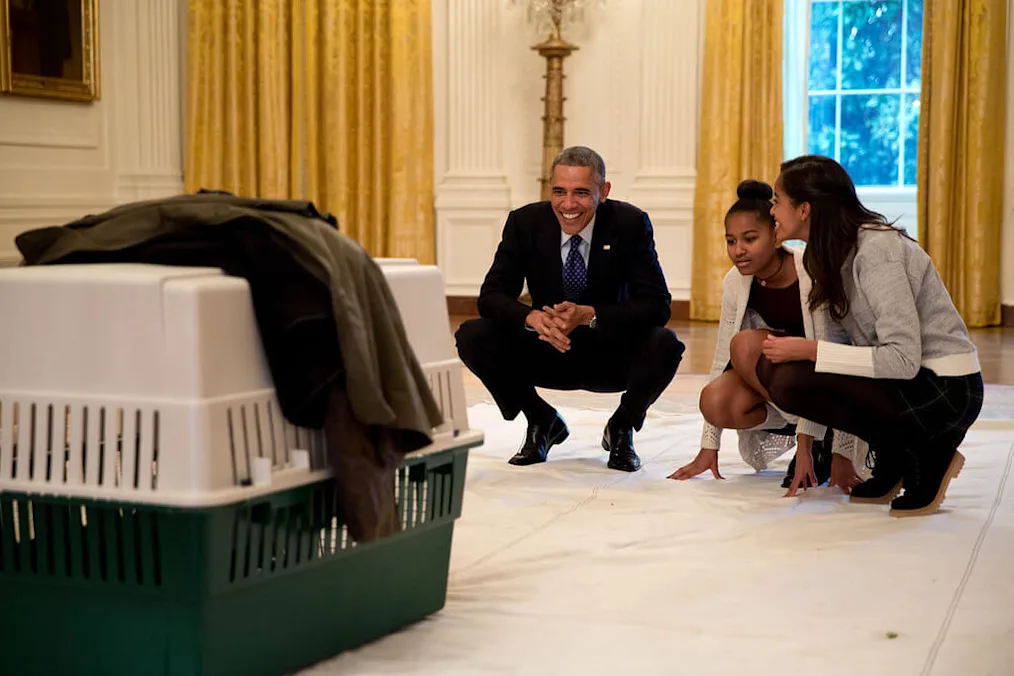
21/21

Bo Inspects the 2012 White House Holiday Decorations
State Dinners Throughout the Years
In the nineteenth century, the term “State Dinner” was used to denote any affair that honored the President’s Cabinet, Congress, or other dignitaries. However, President Ulysses S. Grant changed the meaning of the term when he welcomed King David Kalakua of the Kingdom of Hawaii in 1874. Now, State Dinners are grand affairs hosted by the President to welcome a visiting head of state.
A State Dinner requires at minimum, six months of preparation. From the guest list and invitations, to the menus and seating arrangements, all require the careful attention of the First Lady, State Department, and White House Social Secretary.
Watch: Behind the Scenes: Preparing The United Kingdom State Dinner (Opens in a new tab)
Watch: In the Kitchen before the Korean State Dinner (Opens in a new tab)
Watch: Behind the Scenes: Inside the Kitchen for the France State Dinner (Opens in a new tab)

1/8

2/8

3/8
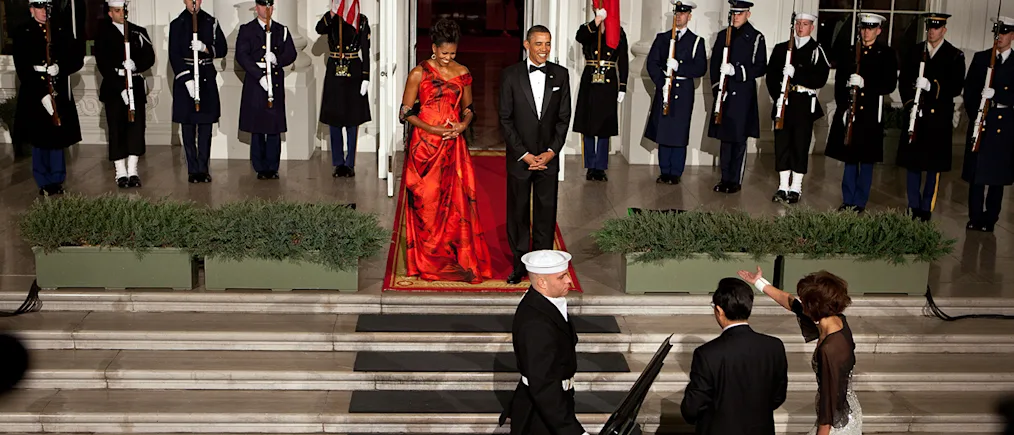
4/8
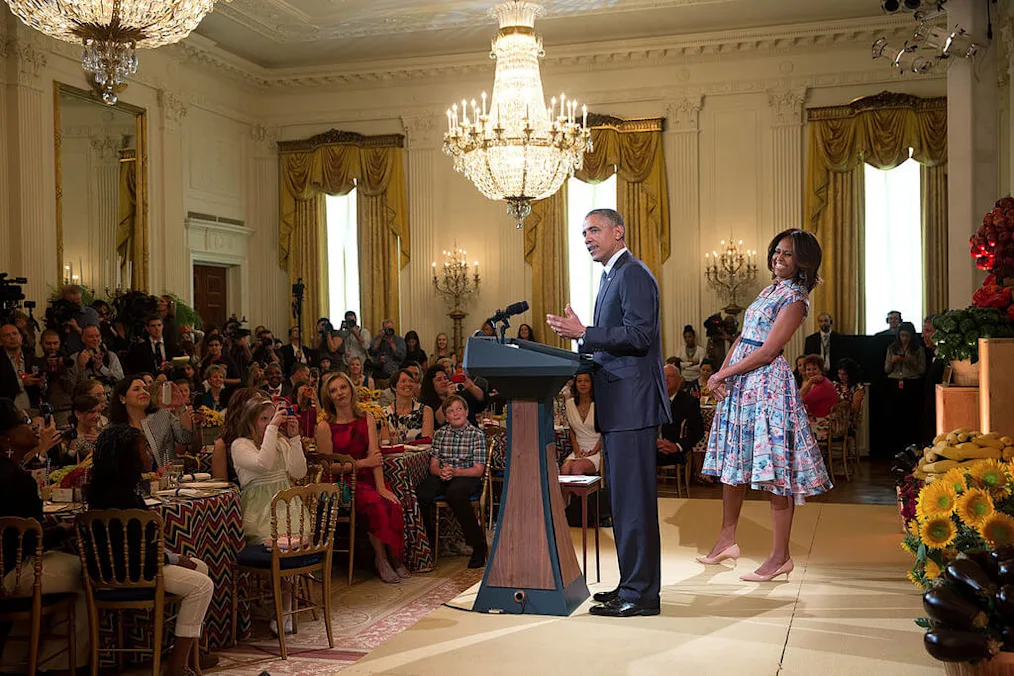
5/8
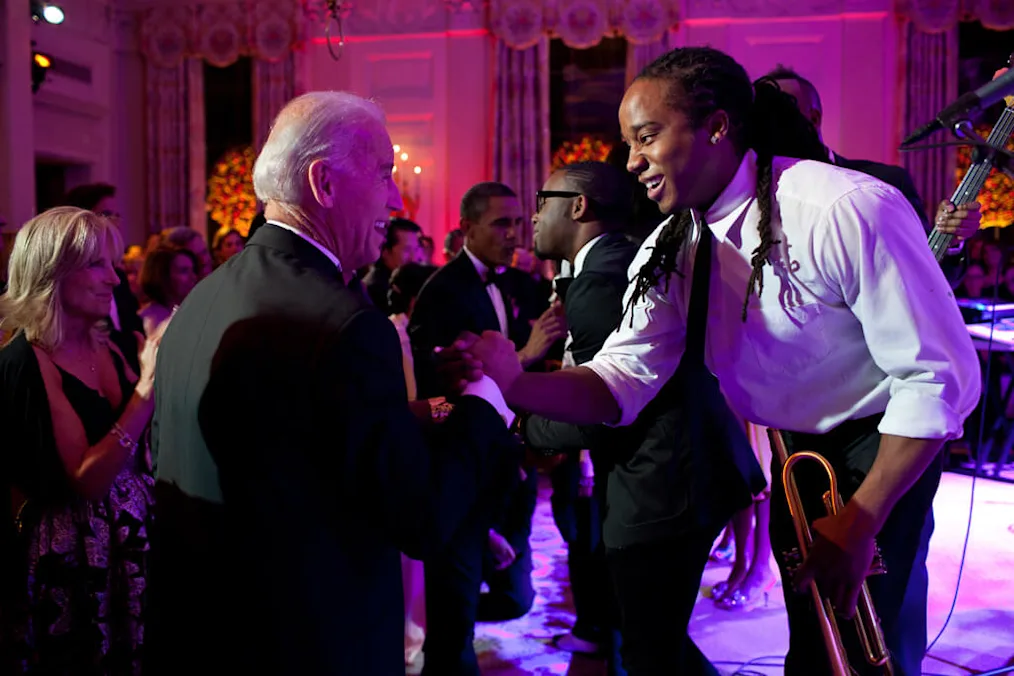
6/8
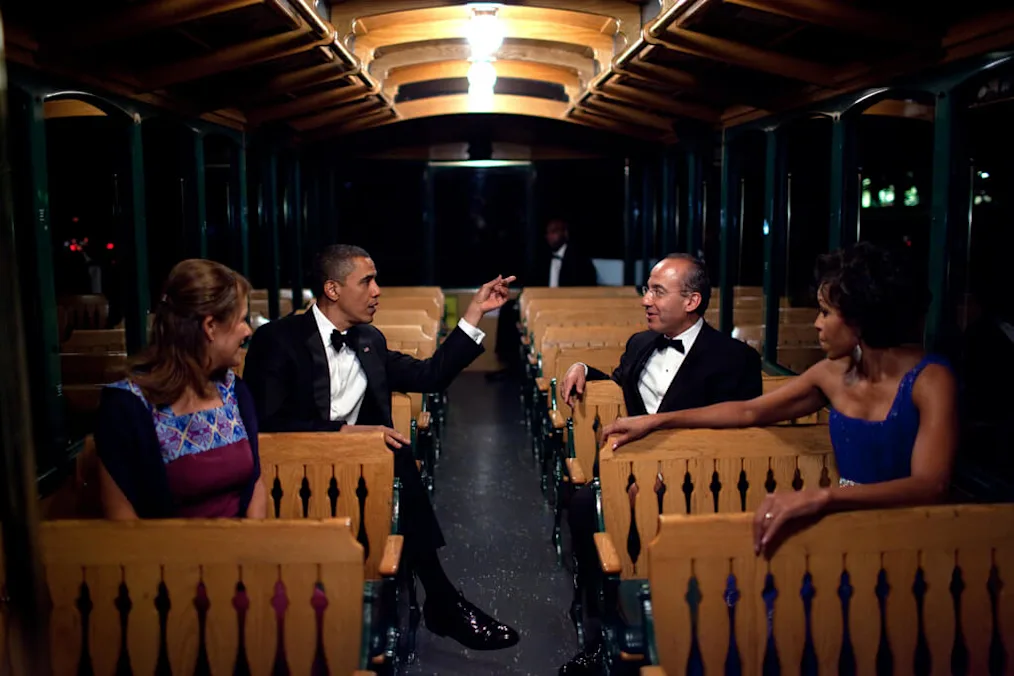
7/8
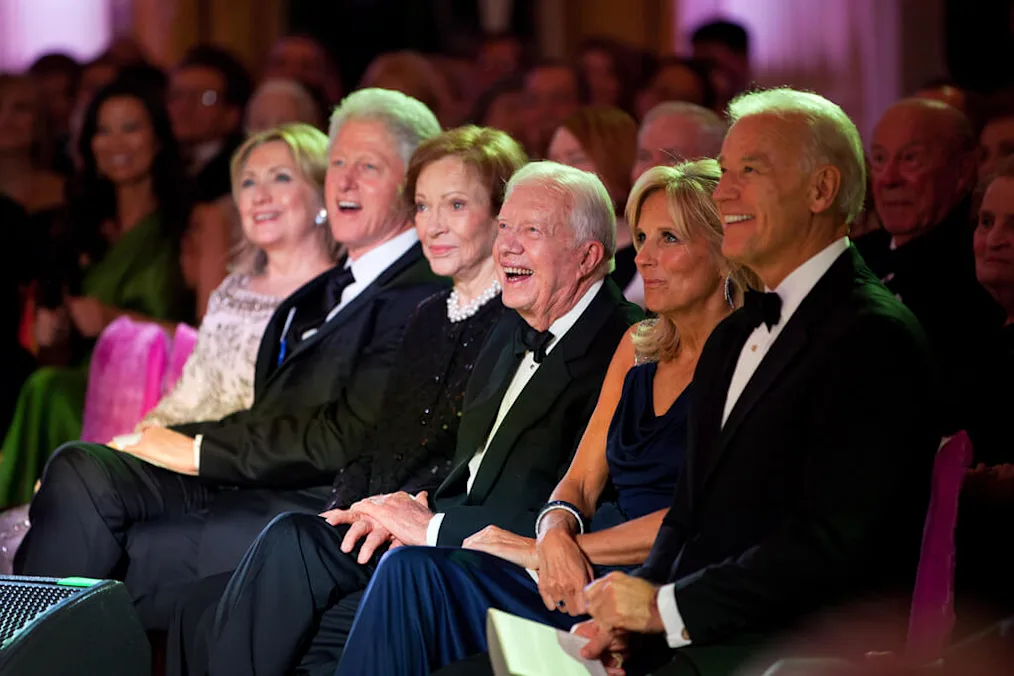
8/8
Musical and Arts Performances at the White House
Musical performances at the White House ranged in form, genre, and style. Artists such as Beyoncé, Mick Jagger, Aretha Franklin, B.B. King, and the Mount Ennon Baptist Church Children’s Chorus performed during President Obama’s time in office.

1/17
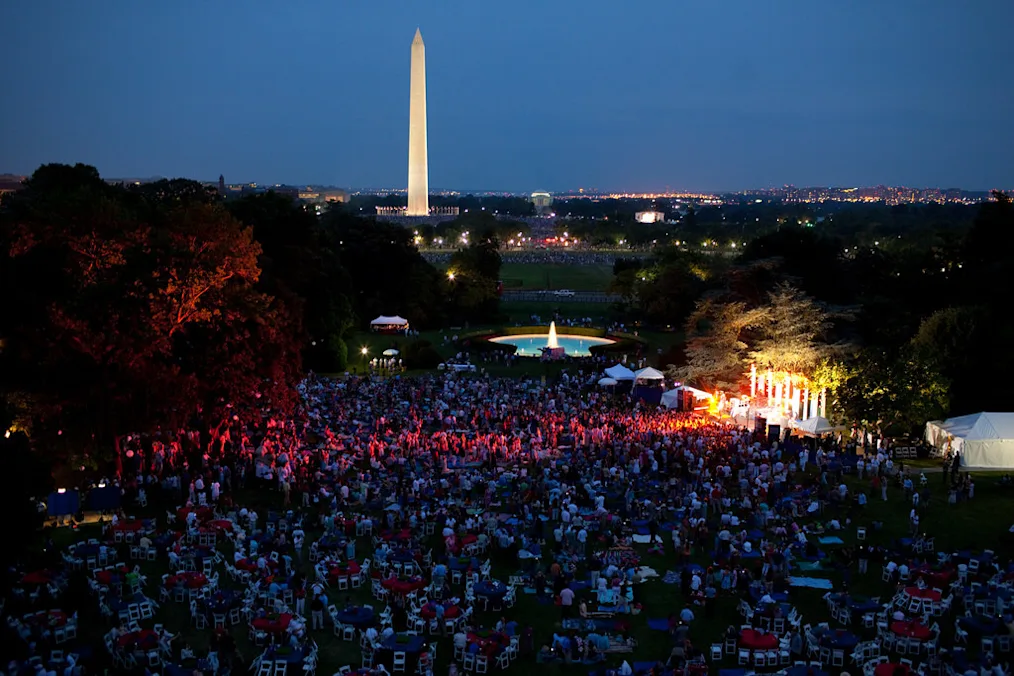
2/17
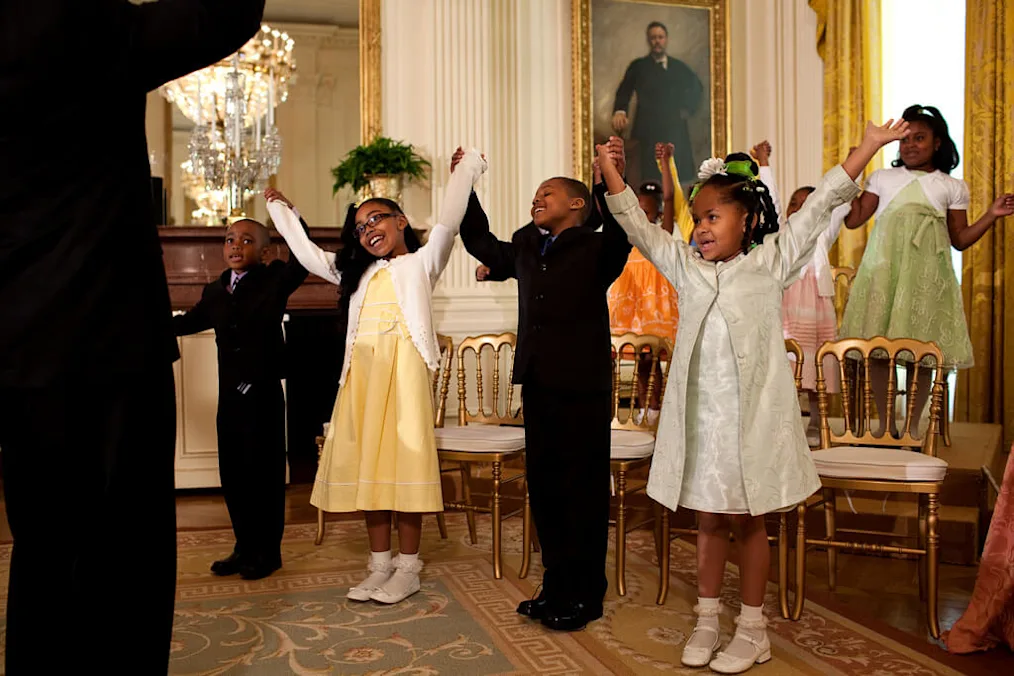
3/17

4/17
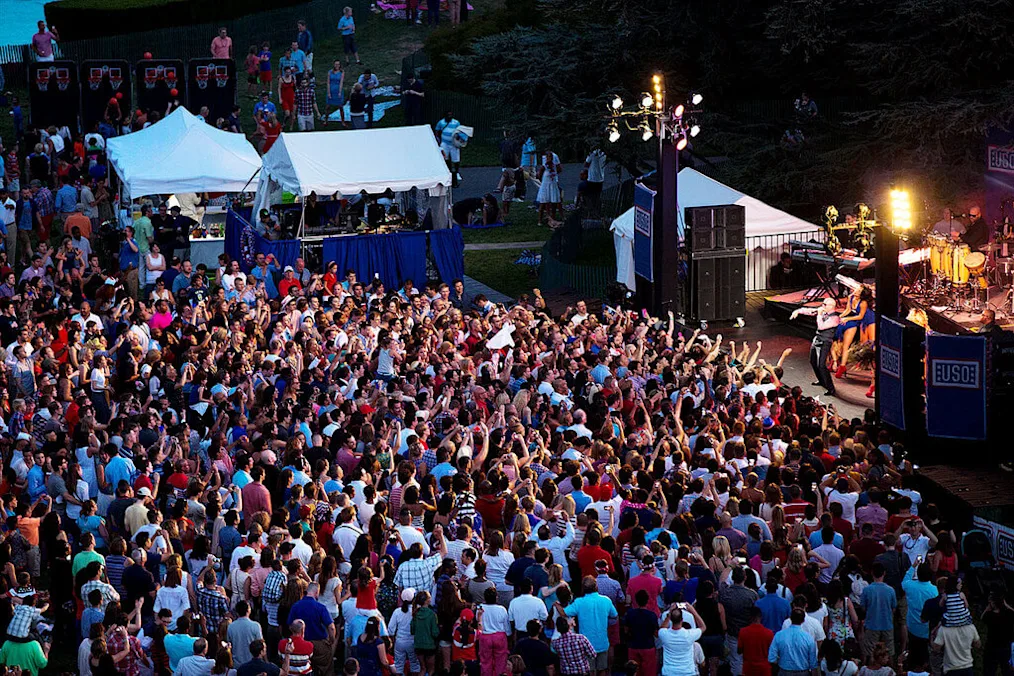
5/17
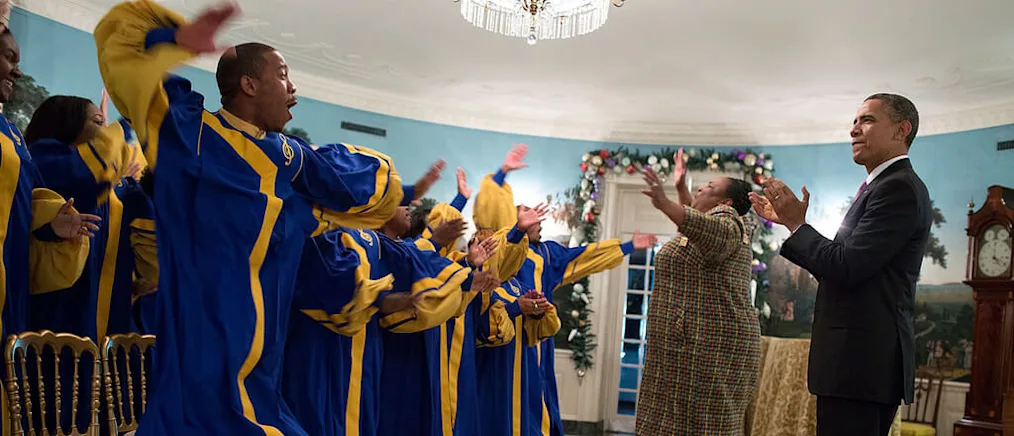
6/17

7/17

8/17
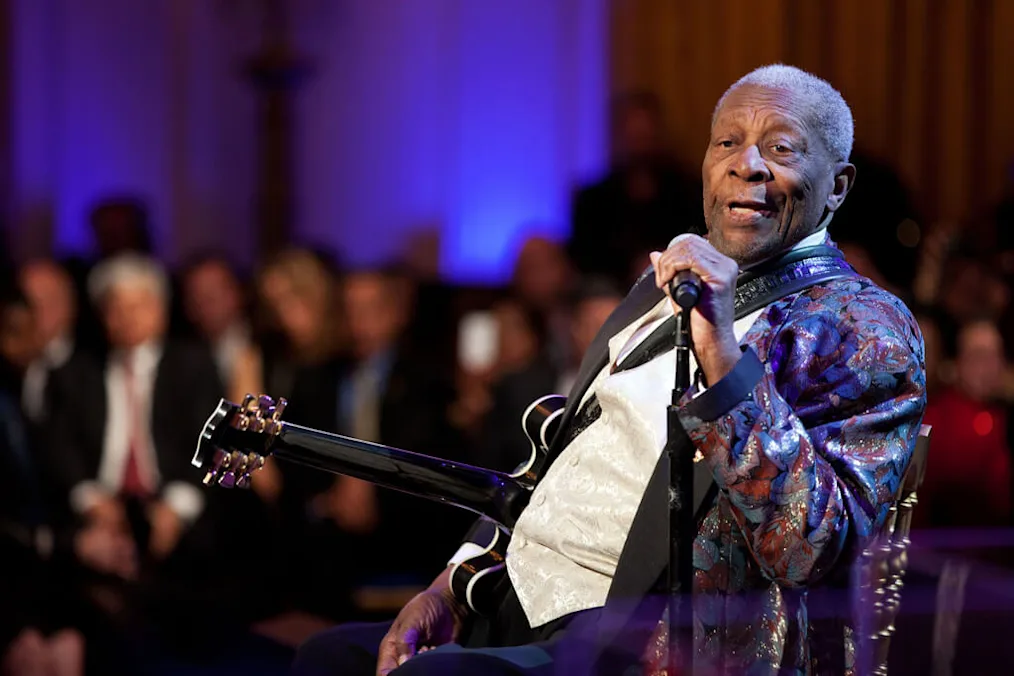
9/17
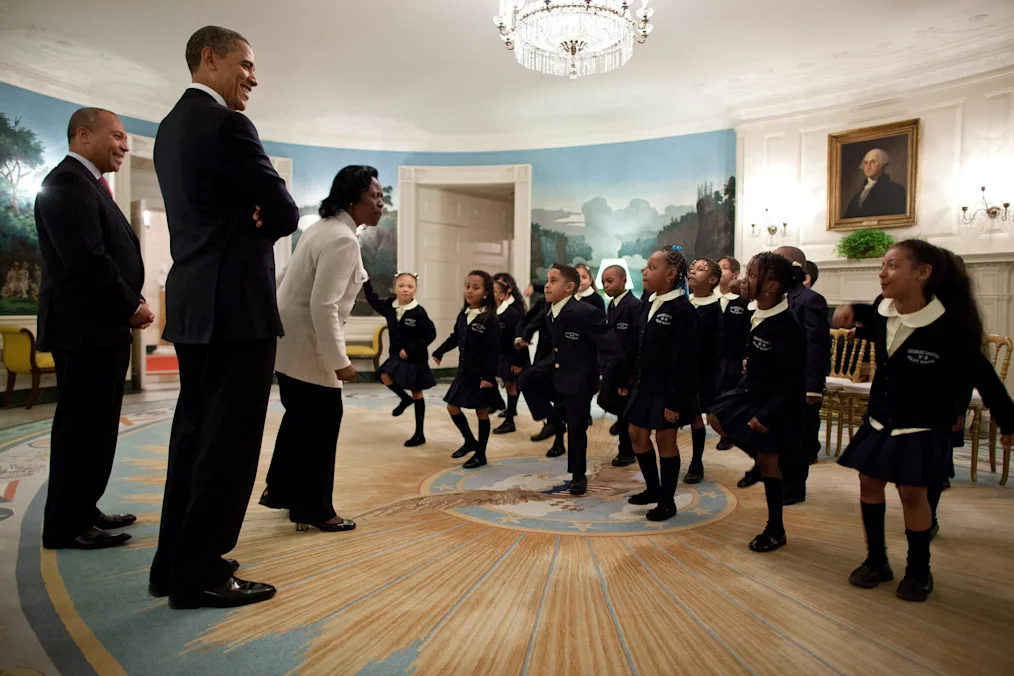
10/17
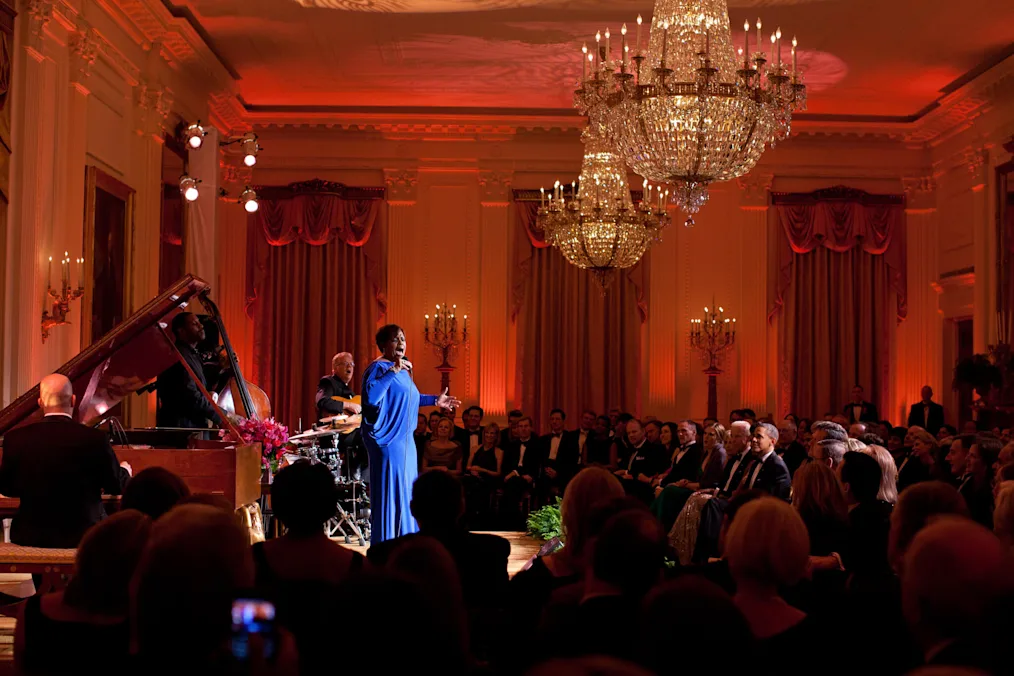
11/17

12/17

13/17

14/17

15/17

16/17

17/17
January 10, 2017
President Obama Delivered His Farewell Address

Farewell Address to the American People
January 12, 2017
Surprised Joe Biden with the Presidential Medal of Freedom

President Obama Awards the Presidential Medal of Freedom to Vice President Biden

Learn more about the Obama Administration
Browse the story of President Obama’s administration and the Obama family’s time in the White House.
Explore by Topic or Era